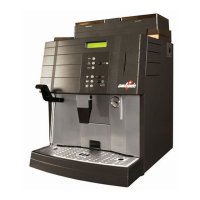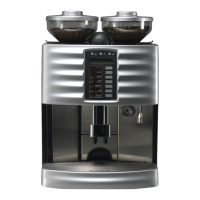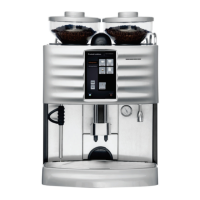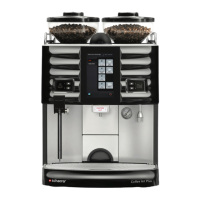Chapter 3 Functional descriptions
60 SMSO-2-02.03- 15.07.03
Technical data
Supply voltage 36 V DC
Battery life: approx. 8 – 10 years
Flash memory 4 MBit
EEPROM 2 kBit
RAM 32 kBit
Check
A full functional check.
of the print cannot be carried out in the field by service tech-
nicians. By querying specific settings and meter readings
during the system check it is possible to check the functions of
the unit control system. If found to be defective the relevant
component or even the entire PCB should be replaced.
For the unit control system to function perfectly the PE con-
ductor must be connected perfectly.
Maintenance
In some cases it is necessary or desirable to reload the pro-
gram. In this case the program chip (Flash-ROM) will need to
be changed. You will find information on the various software
versions in the information file. To replace or change a Flash
ROM or EEPROM: (see “Maintenance, changing the Flash
ROM, EEPROM”)
If the unit control system needs to be changed, the EEPROM
must be plugged into the new unit control system (data
backup). All the meter readings are stored on the EEPROM
and these must be transferred to the new unit control system.
ESD protection
(electro static discharge)
Electrical and electronic components can be damaged by
electrostatic discharge . Such damage only usually appears
when new components or an entire new PCB are installed.
Both people and materials can cause static discharge by fric-
tion. When making contact with delicate electrical or electronic
components such discharge can be discharged to ground
(earth). This could cause disruptive breakdown in the semi-
conductors caused by high voltage or the brief leakage current
can destroy certain semi-conductor structures. There is no
direct hazard to people caused by electro-static discharge,
however fear of or the uncertainly of electric shocks can in-
crease the risk of an accident.
The amount of static discharge depends on a number of fac-
tors such as air humidity, the type of floor covering and the
furniture or packaging, the clothing a person is wearing, speed
of movement by machine, materials and air, the earthing con-
ditions of the premises etc.
In unfavourable conditions voltages of over 30 kV can be
created. However much lower voltages can destroy compo-
nents.
It is essential therefore that there should be an effective pro-
tection against ESD at all locations that are to do with delicate
components. Measures against electro-static discharge may
be:
Instruction on the hazards (including visitors etc.)
Components/areas at risk should be labelled
Personal anti-static measures: Wrist earthing armband,
conducting footwear, clothing made of natural fibres.
Anti-ESD packaging and containers
ESD work surfaces (ESD mat, moisturised air etc.)
The symbol shown alongside is placed on all com-
ponents that need to be protected against ESD, and
on their packaging.
The safety regulations must be applied in particular when
carrying out maintenance work in order to provide effective
ESD protection, in addition to suitable material equipment
(tools, ESD mat etc).
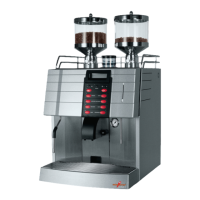
